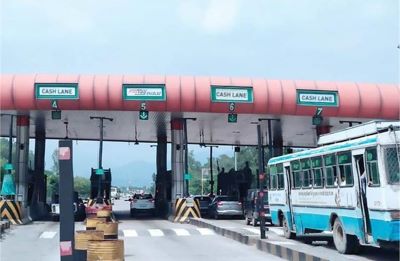Context
In a significant move towards modernizing toll collection systems on highways, the Indian government, led by Road Transport and Highways Minister Nitin Gadkari, has unveiled plans to introduce a new tolling system based on the global navigation satellite system (GNSS). This groundbreaking initiative aims to revolutionize the way tolls are collected, moving towards a more efficient, transparent, and technologically advanced method. With the looming model code of conduct for the 2024 election, the government is pushing forward to implement this system, signaling its commitment to infrastructural development and innovation in the transportation sector.
The Proposed Highway Tolling System
The new tolling system will rely on the global navigation satellite system, which encompasses satellite-based navigation systems such as the United States’ Global Positioning System (GPS). Unlike traditional toll collection methods, which often rely on physical toll booths and barriers, the proposed system will utilize On-Board Units (OBUs) installed in vehicles. These OBUs, essentially tracking devices, will enable the mapping of vehicle locations using GAGAN, the Indian satellite navigation system, with an impressive accuracy of approximately 10 meters. Through digital image processing, the coordinates of national highways will be logged, allowing for precise toll calculation based on the distance traveled by each vehicle.
This system marks a significant departure from the conventional toll collection approach, as it eliminates the need for physical toll booths and barriers, paving the way for barrier-free movement on highways. Additionally, gantries equipped with CCTV cameras will be strategically placed along highways to enforce compliance. These gantries will capture images of vehicles' high-security registration plates, allowing authorities to cross-verify the presence of OBUs and detect any attempts to circumvent the system.
Challenges and Solutions
Despite its potential benefits, the proposed tolling system also poses several challenges that need to be addressed for successful implementation. One major concern is the issue of toll recovery in cases where road users fail to clear their payments. Unlike traditional toll booths, which can physically prevent non-compliant vehicles from passing, this system lacks such enforcement mechanisms. Consequently, the government will need to establish infrastructure for toll recovery and define penalties for non-compliance.
Another challenge lies in ensuring the integrity of the system and preventing fraudulent activities, such as tampering with OBUs or using unauthorized vehicles on highways. To address this, the government plans to deploy gantries equipped with Automatic Number Plate Recognition (ANPR) systems to detect violations. However, the effectiveness of these systems hinges on the quality of license plates, posing an additional challenge that needs to be addressed through technological advancements and standardization efforts.
Privacy Safeguards
Privacy concerns have also been raised regarding the use of tracking devices and satellite navigation systems for toll collection. In response to these concerns, the government has opted to utilize the GAGAN satellite system instead of GPS, ensuring data security within the country. Additionally, the Digital Personal Data Protection Act, passed in Parliament in 2023, aims to address privacy issues by establishing safeguards for personal data and regulating its collection, storage, and usage. However, the implementation and enforcement of these regulations will be crucial in safeguarding the privacy rights of vehicle users.
Coexistence with FASTags
One question that arises with the introduction of the new tolling system is its relationship with existing toll collection methods, particularly FASTags. FASTags, which rely on radio frequency identification technology, have become increasingly prevalent on Indian highways, with nearly 99% compliance reported by December 2023. Despite this widespread adoption, the government has not yet decided whether OBUs will be mandatory for all vehicles or only for new ones. Consequently, the new tolling system will coexist with FASTags, offering road users multiple options for toll payment.
Conclusion
In conclusion, the proposed highway tolling system based on the global navigation satellite system represents a significant step forward in modernizing India's transportation infrastructure. By leveraging satellite technology and tracking devices, the government aims to streamline toll collection processes, enhance accuracy, and promote barrier-free movement on highways. However, the successful implementation of this system will require overcoming various challenges, including toll recovery, enforcement, and privacy concerns. Additionally, the coexistence of the new system with existing toll collection methods like FASTags underscores the importance of flexibility and adaptability in transitioning towards more efficient and technologically advanced transportation systems. Overall, the proposed tolling system holds the promise of transforming India's highway infrastructure and improving the overall travel experience for road users.
|
Probable Questions for UPSC Mains Exam 1. Discuss the potential benefits and challenges associated with the proposed highway tolling system based on the global navigation satellite system (GNSS) in India. How can the government address concerns such as toll recovery, enforcement, and privacy safeguards to ensure the successful implementation of this innovative approach? (10 marks, 150 words) 2. The introduction of a new tolling system based on the global navigation satellite system (GNSS) raises questions about its coexistence with existing toll collection methods like FASTags. Analyze the implications of maintaining multiple tolling systems on Indian highways and discuss the strategies the government could employ to streamline toll collection processes and enhance efficiency while ensuring a smooth transition for road users. (15 marks, 250 words) |
Source – The Hindu







